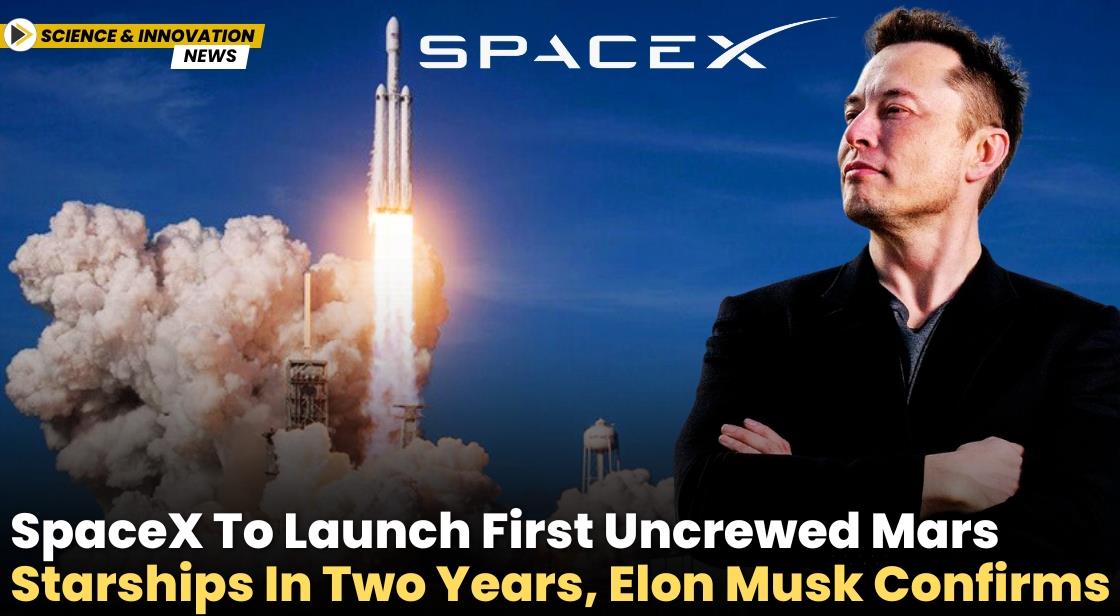SpaceX to Launch First Uncrewed Mars Starships in Two Years, Elon Musk Confirms

Podcast
News Synopsis
SpaceX, under the leadership of visionary CEO Elon Musk, has announced an ambitious timeline for its Mars colonization efforts. The company plans to launch uncrewed Starship missions to the Red Planet within the next two years, with crewed flights set to follow in four years. The ultimate goal of the project is to build a self-sustaining city on Mars within the next 20 years.
Key Milestones and Goals:
-
Uncrewed Missions: SpaceX will initially send uncrewed Starships to Mars to test the reliability of landing intact on the planet's surface.
-
Crewed Flights: If the uncrewed missions are successful, SpaceX plans to send the first crewed flights to Mars within four years.
-
Self-Sustaining City: The ultimate goal is to establish a self-sustaining city on Mars within two decades.
-
Technological Advancements: SpaceX aims to reduce the cost of transporting materials to Mars to USD 100k/ton, making it economically feasible to build a self-sustaining city.
Recent Starship Achievements:
-
Successful Test Flight: SpaceX's Starship successfully launched and achieved key objectives during its fourth test flight in June 2024.
-
Reusability Demonstration: The test flight showcased the vehicle's reusability, with both the Starship capsule and the Super Heavy booster successfully landing.
-
Orbital Insertion: The Starship capsule achieved orbital insertion, demonstrating its capability for long-distance space travel.
Recent Starship Test Flights
Earlier this year, SpaceX achieved key milestones with its Starship program. The company successfully launched its most powerful launch vehicle, the Starship, on June 6, 2024, from its private Starbase facility in Boca Chica, Texas. The launch, which took place at 8:50 a.m. ET, was live-streamed by the company on X.
The Starship launch system comprises two main components: the upper Starship spacecraft and the Super Heavy rocket booster. As per SpaceX's broadcast, 32 of the rocket's 33 engines successfully ignited during the launch, signifying a successful ignition sequence.
During the flight, Starship achieved several important objectives, including reentry into Earth's atmosphere and splashdown of both the spacecraft and booster. The Super Heavy booster performed a landing burn and made a soft splashdown in the Gulf of Mexico eight minutes after launch.
Additionally, the Starship capsule successfully achieved orbital insertion. Approximately 50 minutes after the launch, the spacecraft began its controlled reentry, with plasma buildup visible around the vehicle as it re-entered Earth’s atmosphere at peak heating.
Despite the intense heat, Starship's heat shield withstood the extreme temperatures, and both the capsule and booster survived the test flight. The company’s Starlink satellites played a crucial role in ensuring uninterrupted live streaming during reentry, even as the camera view was briefly blocked by particulate matter.
Ultimately, Starship completed its landing burn and splashed down in the Indian Ocean as planned, marking another significant step forward for SpaceX's ambitious Mars mission.
Building a City on Mars
The ultimate goal of these missions, as SpaceX CEO Elon Musk has outlined, is to build a self-sustaining city on Mars. This city would serve as a safe haven for humanity, should Earth ever face catastrophic challenges. Musk believes that being multiplanetary will greatly increase the longevity of human civilization by ensuring that our existence isn’t tied to just one planet.
While the challenges of creating a Mars city are immense—especially the need to reduce costs by 10,000 times—SpaceX is determined to push the boundaries of what's possible in space travel. Musk's vision reflects not only the aspirations of SpaceX but also the broader goal of making human life interplanetary.
Conclusion:
Elon Musk's announcement marks a significant milestone in SpaceX's Mars colonization efforts. The company's ambitious timeline and technological advancements position it as a leader in space exploration. If successful, SpaceX's mission to Mars could pave the way for human expansion beyond Earth and the establishment of a new civilization on the Red Planet.





